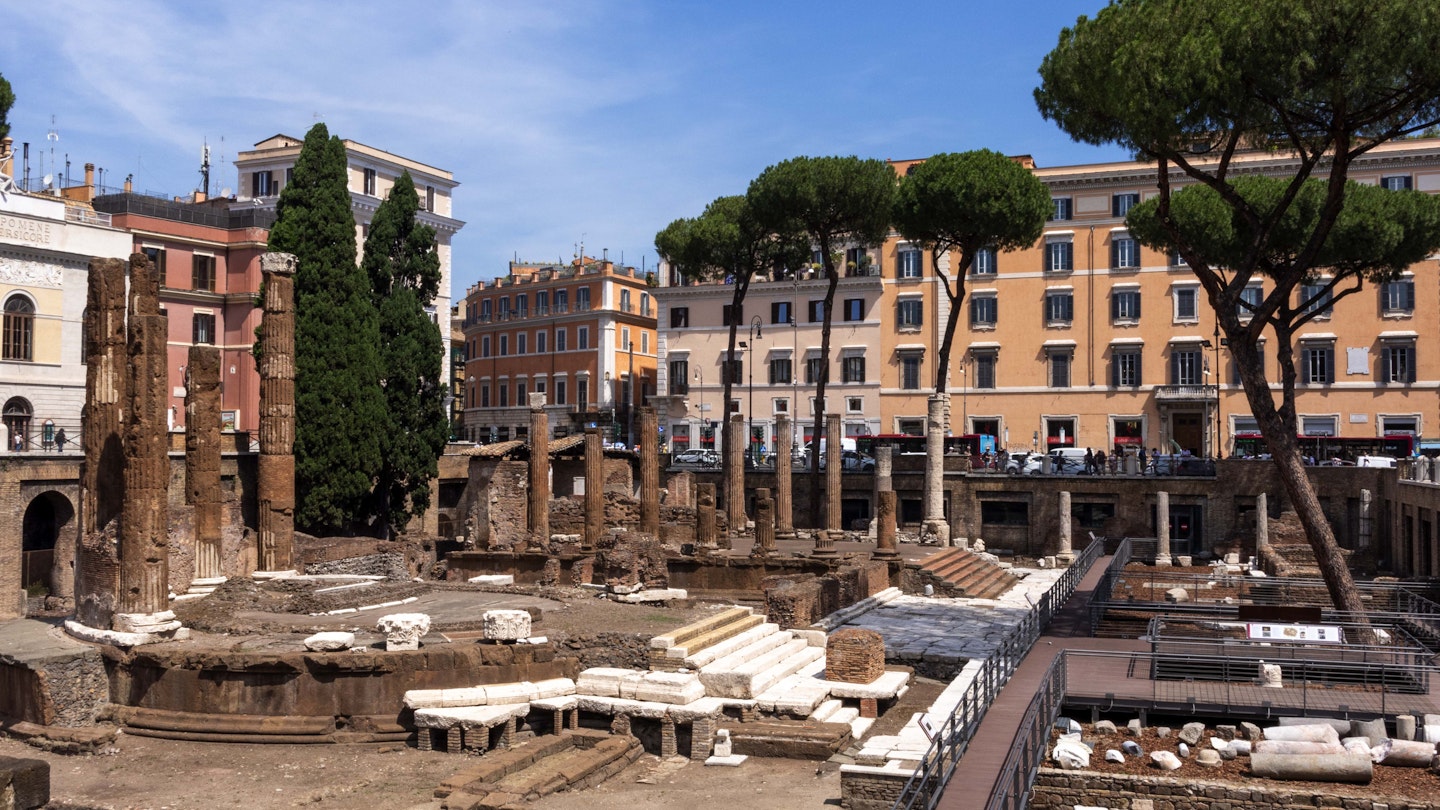You’d be forgiven for thinking that in a city like Rome, not much changes when it comes to ancient ruins. However, this week, a ‘new’ corner of the city has opened to the public – and it just so happens to be 2,000 years old.
The ancient Roman remains of the Acra Sacra di Largo Argentina (sacred area of Largo Argentina) have long been visible from street level at Largo Argentina, a busy, trafficked square just a few minutes’ walk from the iconic Piazza Navona.
Now, visitors can descend around 20 feet below the modern city to Roman street level and walk around ruins that have been untrodden for centuries.
What’s Old is New Again

Although overlooked for centuries, Largo di Torre Argentina is one of Rome’s most important historical sites. This is where, on March 15, 44 BCE, Julius Caesar is said to have been assassinated, effectively ending the Republican era of ancient Rome and paving the way for the Roman Empire, founded by Caesar’s successor, Emperor Augustus.
The area was largely built over in the centuries that followed, before being designated an archaeological heritage area in the 1920s. This was during a time when efforts were made to link the Fascist dictatorship to the Roman Empire, leading to significant excavations.
In recent decades, the area—now a square—was known as a public transport hub with the ruins fringed by bus and tram stops. Interestingly, a cat sanctuary existed inside part of the ancient remains.
However, all that has changed, and for the first time, people can walk around the space where history was made.

The works—sponsored by the Bulgari fashion house and undertaken by the Sovrintendenza Capitolina ai Beni Culturali, or heritage superintendence—guide visitors through the site’s history on wheelchair-accessible walkways around the ruins. Buildings from the Republican era, the Roman Empire, and the medieval period are all explained on informative panels.
Travel 2,000 Years into the Past
Visitors can follow the walkways around four temples dating from the early third century BCE to the end of the second century BCE, dedicated to divinities including Feronia, who was believed to grant freedom to enslaved people.

They can also see remains of the Portico di Pompeo, which includes the sturdy tufa rock base of the Curia, or senate house, outside which Caesar was stabbed to death.
Later remains include a pavement made of travertine slabs, laid by Emperor Domitian after a fire in 80 CE.
Claudio Parisi Presicce, Rome’s heritage superintendent, remarked that the opening “has returned a very important area to the city, allowing everyone to admire a cross-section of history spanning more than two millennia: from Republican Rome to that of the emperors, from the reuse of structures as residences of aristocratic families, churches, and monasteries to the demolitions of the 1920s.”

“The splendid result was made possible thanks to a fruitful collaboration between the public and private sectors,” he added, expressing gratitude towards the Bulgari Group.
A Wholly Accessible Site
Two exhibition spaces—one in the Torre del Papito, a medieval tower built over the remains, and another under a nearby street—display various finds from site excavations, including sarcophagi, architectural elements, and two enormous statue heads of the divinities venerated in the area.
This site is inclusive; the route is wheelchair-accessible, with tactile panels, braille descriptions, and even 3D scans of two archaeological finds catering to visitors who are blind or vision-impaired. Miguel Gotor, Rome’s councillor for culture, called it “one of the most beautiful and precious places in Rome.”

Jean-Christophe Babin, CEO of the Bulgari Group, stated that the project allowed the company “to honor the deep bond we have with Rome, which has always been an inexhaustible source of inspiration and a millennial crossroads of arts, cultures, and traditions.”
He exclaimed, “You can feel history breathe in the Area Sacra. These majestic ruins—which we can now admire up close—tell of the greatness of an empire that forged our civilization.”





